A soft robot will help your heart beat
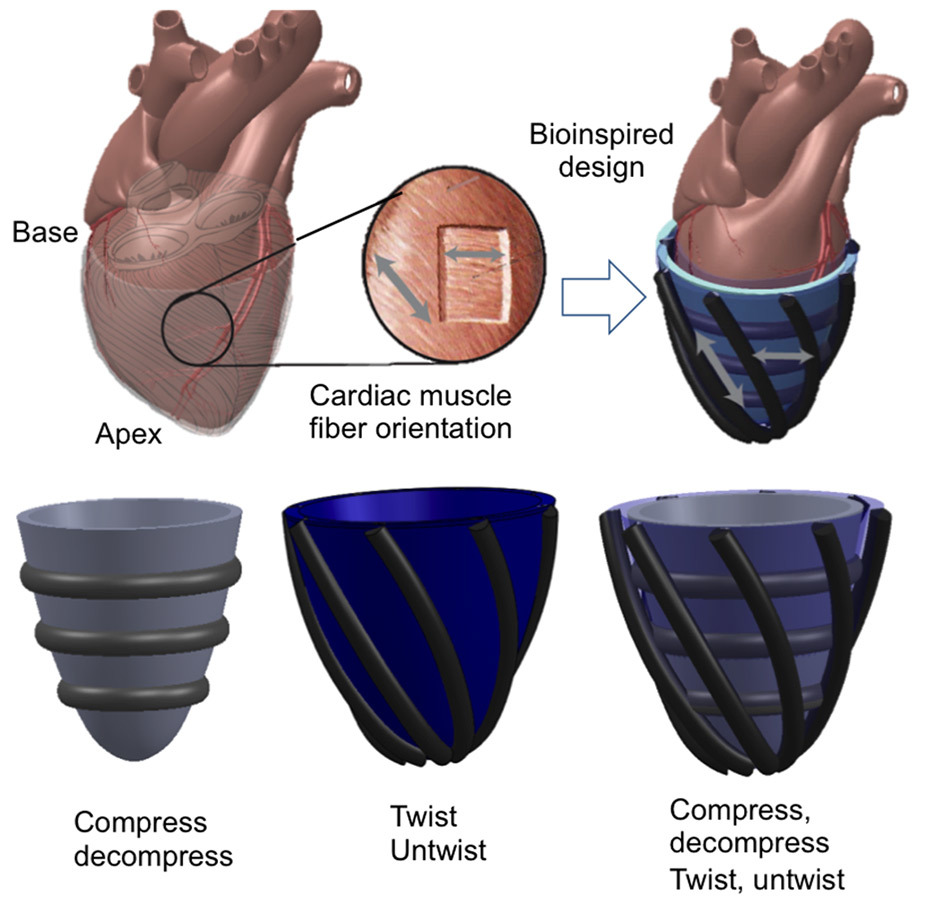
About 41 million people worldwide live with heart failure syndrome - a chronic disruption of the heart. Very often, this syndrome is one of the causes of death. Approximately every second with such a diagnosis dies within five years after the diagnosis.
The disruption of the heart is manifested in the fact that the heart muscle does not sufficiently provide blood circulation. Because of this, a large amount of carbon dioxide accumulates in the blood, with all the ensuing consequences: hypoxia of organs and tissues, acidosis, metabolic disorders, and in the end - possible death.
Fortunately, thanks to the latest advances in electronics and soft robotics, millions of people will soon have a hope for recovery.
Currently, one of the treatments for heart failure lies in the setting of heart ventricle support system (ventricular assist device, VAD) - mechanical device which partially or completely replaces the function of the heart.
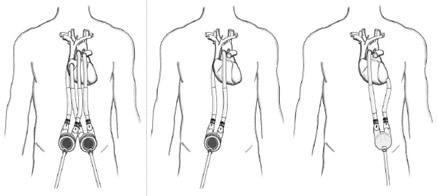
Variants of implantation of support systems of the ventricles of the heart
This system helps with heart failure, but increases the risk of accumulation of blood clots and the occurrence of stroke.
Researchers at Harvard University and the Boston Children's Hospital have developed a more efficient and safer alternative. This is a soft silicone clutch , made exactly along the contours of the heart and surrounding it from all sides. The robotic clutch cuts to the beat of the heart and helps it cope with the work.

“This work is a great proof of conceptual results for such a soft robot. It demonstrates the ability to interact safely with soft tissues and helps improve heart function, ” says Conor Walsh, one of the authors of a scientific article.
The developed coupling is made of a soft material that does not cause rejection. On top of the coupling seams are superimposed, which are reduced and under the influence of pneumatic actuators. The direction of the seams is thought out in such a way that the sleeve is cut and rotated synchronously with the outer layer of the heart muscle. In a sense, it is a kind of analogue of a robotic exoskeleton that strengthens the living heart, created in its likeness.
Demonstration of the work of a soft robot in the laboratory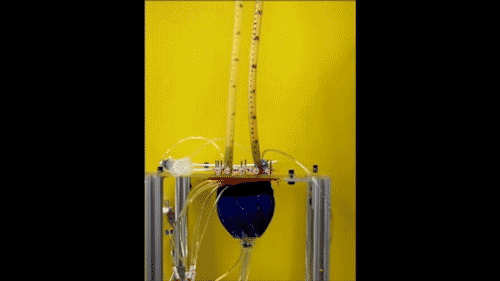

Gel coating reduces friction between the robot and living tissue.
The advantage of silicone material is that the coupling can be made for any size and shape of the heart. Moreover, it can complement a biological organ in the event of a defect. For example, if the left ventricle of the heart works weaker than the right ventricle, then the device can be adjusted so that it more actively helps the heart from the side of the left ventricle.
The activity of the device is controlled by a computer and configured if necessary. For example, if cardiac function is restored, then the power of support can be reduced. Theoretically, in some cases, thanks to such support, the heart can fully recover from a heart attack, so that the device can be turned off over time.
At one time, cardiology refused to use the mechanisms of heart compression due to technical limitations in favor of devices like VAD, but now with the development of soft robotics it makes sense to revise these principles again.
For robotics itself, this is also an important achievement, because this device is the first soft robot designed to work inside the human body. However, before the start of experiments on humans, a number of long-term experiments on animals are to be conducted.
Demonstration of the work of a soft robot in the chest of a pig (in vivo)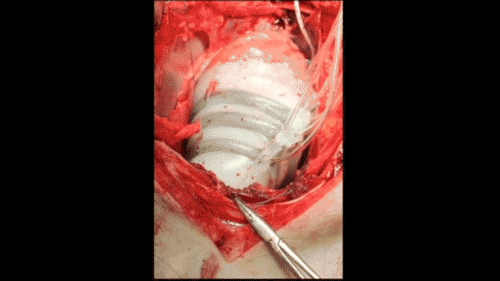

Perhaps sometime in the future, such devices will be able to almost completely eliminate the death rate from heart failure. All people will install support for the heart for the 55th anniversary, as part of a pension package from the state or an insurance company - and the person will be able to continue to live a full life without fear of a heart attack.
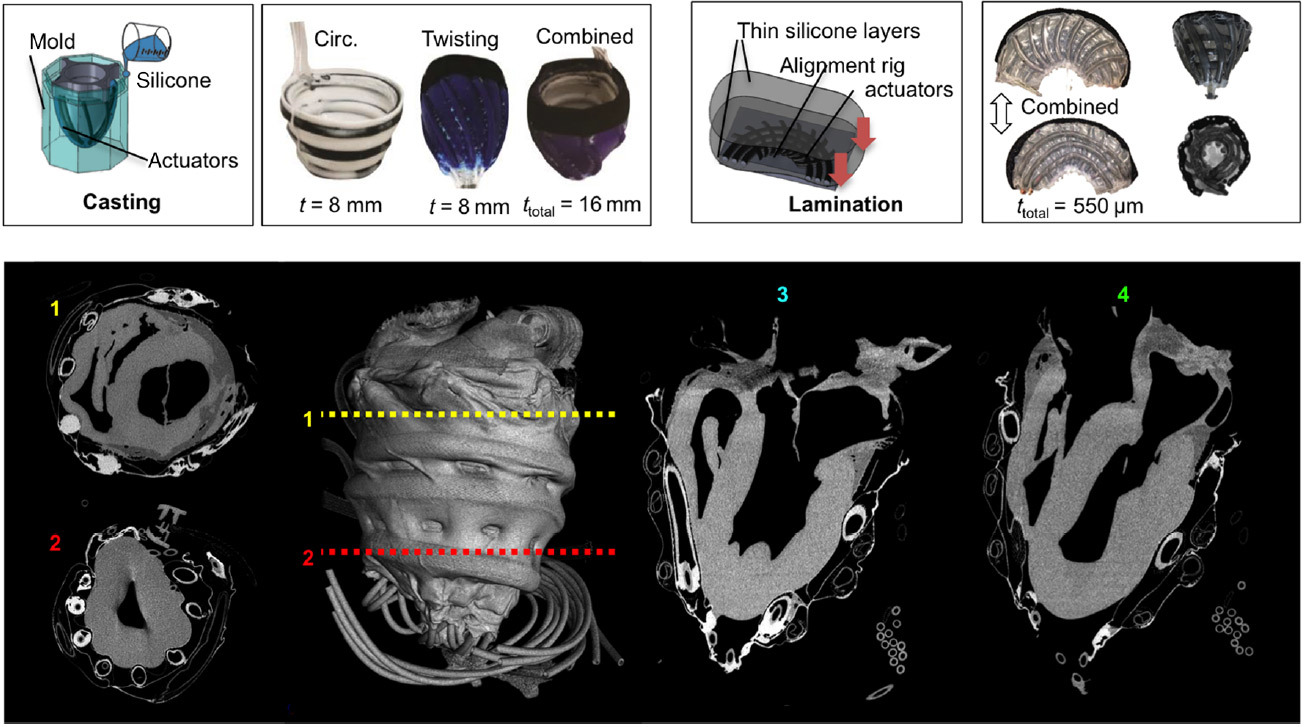
The design of a soft robot to support the heart.
In the first generation, a soft robot is still rather cumbersome. Electronics for data acquisition and pneumatics are made in the form of external peripheral devices, which are located outside the body. That is, the whole set will have to carry / carry with you. It is hoped that engineers will be able to quickly solve the problem of miniaturization of the periphery.
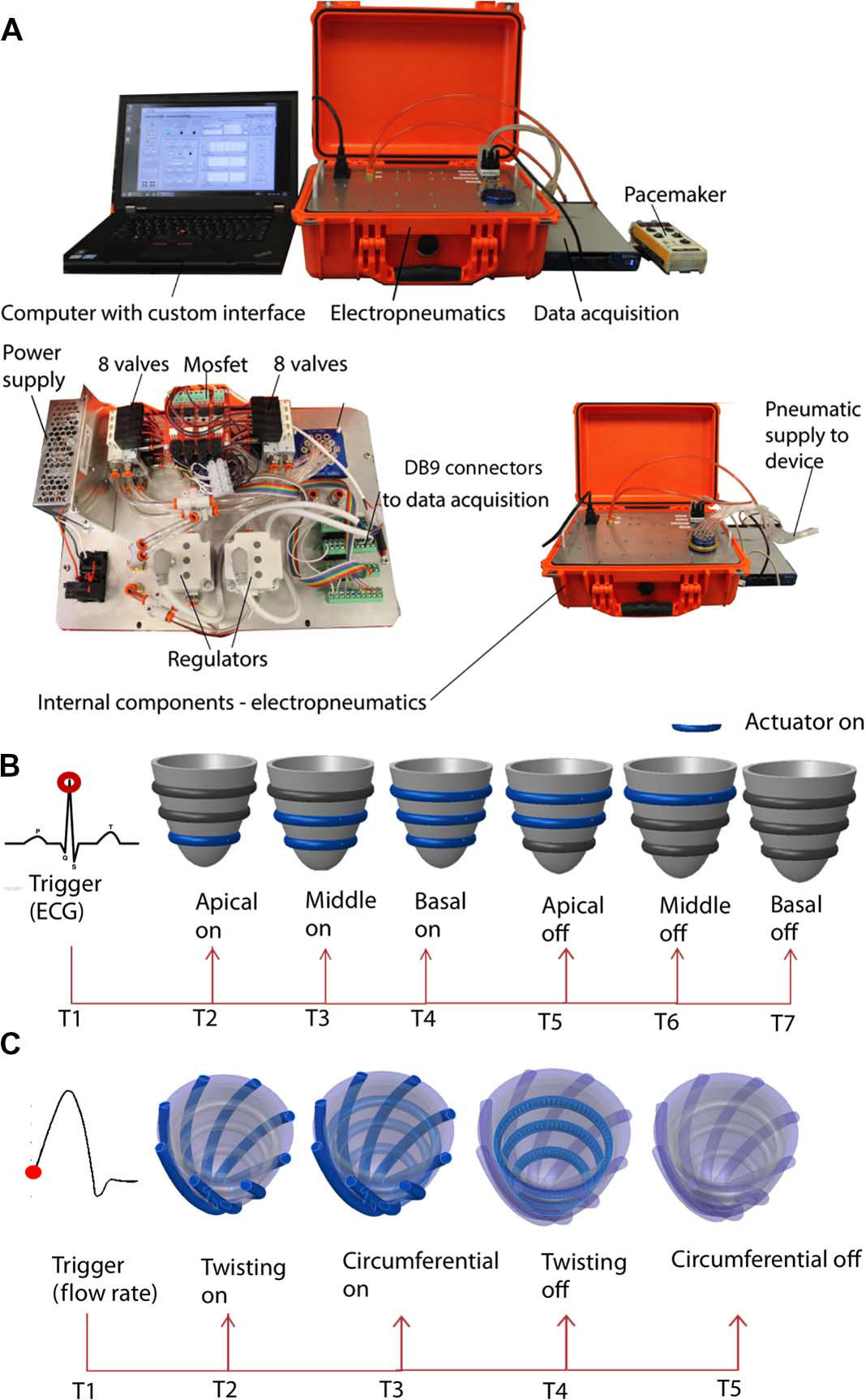
The set of equipment for the maintenance of the implant
Scientific workpublished January 18, 2017 in the journal Science Translational Medicine (doi: 10.1126 / scitranslmed.aaf3925).
